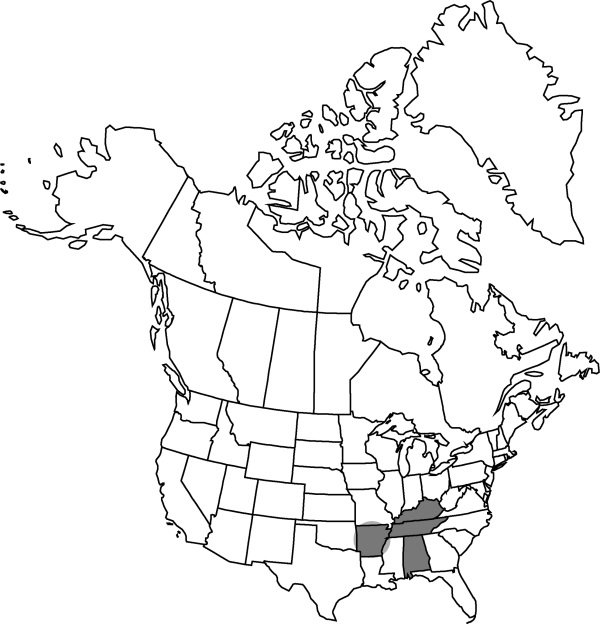Difference between revisions of "Phemeranthus calcaricus"
Novon 11: 320. 2001.
FNA>Volume Importer |
FNA>Volume Importer |
(No difference)
| |
Revision as of 20:03, 24 September 2019
Plants to 2.5 dm; roots tuberous, fleshy. Stems ascending to erect, sometimes branching, ± tufted. Leaves sessile; blade terete, to 5 cm. Inflorescences cymose, overtopping leaves; peduncle scapelike, to 15 cm. Flowers: sepals persistent, ovate, 3–4 mm; petals rose-purple, elliptic to obovate, 8–10 mm; stamens 25–45; stigma 1, distinctly 3-lobed. Capsules ovoid to obovoid, 4–6 mm. Seeds without arcuate ridges, 1.2 mm. 2n = 48.
Phenology: Flowering May–Sep.
Habitat: Cedar glades in shallow soil on limestone outcrops
Elevation: 100-400 m
Distribution

Ala., Ark., Ky., Tenn.
Discussion
A recent study strongly suggests that Phemeranthus calcaricus is a derivative of autotetraploid P. calycinus (W. H. Murdy and M. E. B. Carter 2001). Congruent with that hypothesis, one collection from a glade in Izard County, Arkansas (B. L. Lipscomb 1577, NCU), which is within the range of P. calycinus, appears to belong to P. calcaricus, which is known otherwise only from well east of the Mississippi River and outside the range of P. calycinus.